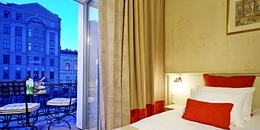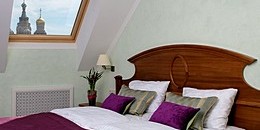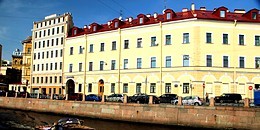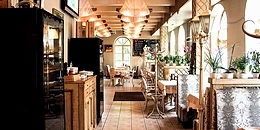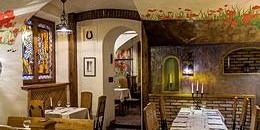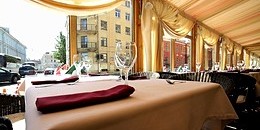Millionnaya Ulitsa (Million Street)
One of St. Petersburg's most impressive streets, running from the Summer Garden to Palace Square, Millionnaya Ulitsa originated in the earliest years of St. Petersburg and was a settlement for wealthy foreigners, mostly Germans and Greeks. Therefore the neighborhood around the street was named the German settlement and the Greek settlement. Starting from the 1720s, the street was built up with the stone houses of aristocrats who wanted to live closer to the imperial residence - the Winter Palace. From that time, the street was known as Dvoryanskaya (Noble) and Millionnaya - the latter still used to this day.
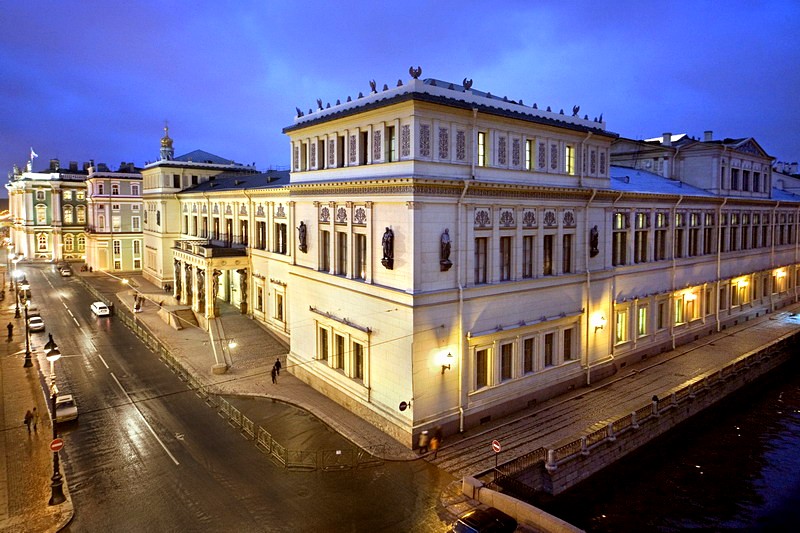
The oldest surviving buildings on the street are at the eastern end and date from the late 18th century. The first two buildings to the east of Suvorovskaya Ploshchad are now the campus of the St. Petersburg University of Culture and Art, which was founded in 1918 and was previously the Nadezhda Krupskaya Institute for Political Enlightenment. The Betskoy House (No. 1) was built 1784-1787 for Ivan Betskoy, president of the Academy of Arts for 30 years and the man responsible for establishing Russia's first public education system. The Saltykov House (No. 3) was built by Giacomo Quarenghi 1784-1788 for General Field-Marshal Nikolay Saltykov, whose high rank was awarded for his services as tutor to Paul I's two sons, the future Alexander I and his brother Konstantin Pavlovich.
Millionnaya Ulitsa then crosses Suvorovskaya Ploshchad at the northern end of the Field of Mars, passing Vasiliy Stasov's splendid Barracks of the Pavlovsk Guards Regiment (No. 2). The building to the west of Troitsky (Trinity) Bridge at No. 5 was the site of the "Post Yard", St. Petersburg's first post office, established in 1714. In 1844-1849, it was reconstructed by Alexander Bryullov to form the administrative wing of what is Millionnaya Ulitsa's most famous building, the magnificent Marble Palace, originally constructed 1768-1785 by Antonio Rinaldi for Count Grigory Orlov, and also remodelled by Bryullov in the 1840s.
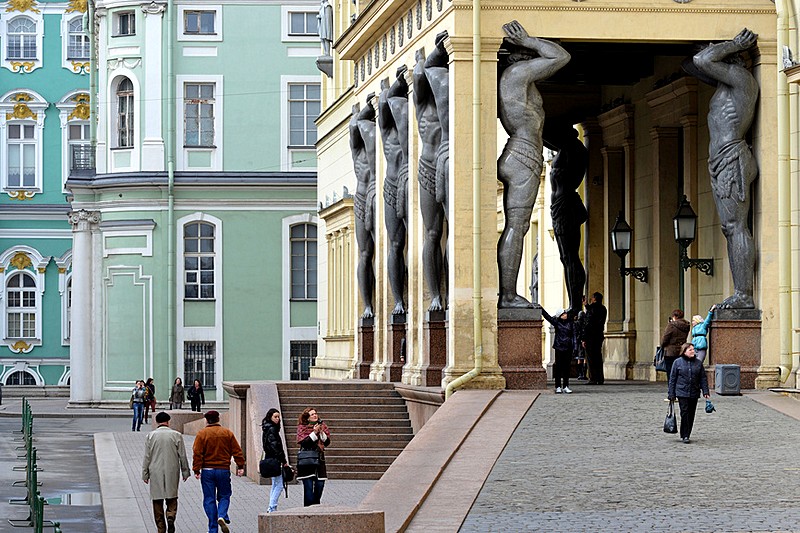
Next to the Marble Palace at No. 7, the ornately decorated three-story mansion famous for its fine marble caryatides supporting its circular bay window was originally the Palace of Dmitrie Cantemir, Prince of Moldavia, philosopher and musicologist. The building at No. 4 (1789-1796), also by Giacomo Quarenghi, originally housed the Main Court Pharmacy, which sold medicines prepared from the plants in the Apothecary's Garden (now St. Petersburg's Botanical Garden). It was later converted into apartments for the officers of Pavlovsk Regiment.
Next door, the large building with simple rococo decorations (No. 6) is the so-called "Spare Palace", part of the complex of buildings connected to the Novo-Mikhailovsky Palace (No. 19), designed by Andrey Stackenschneider for Mikhail Nikolayevich, son of Nicholas I, whose estate ran from Palace Embankment across Millionnaya Ulitsa and on to the Moyka River.
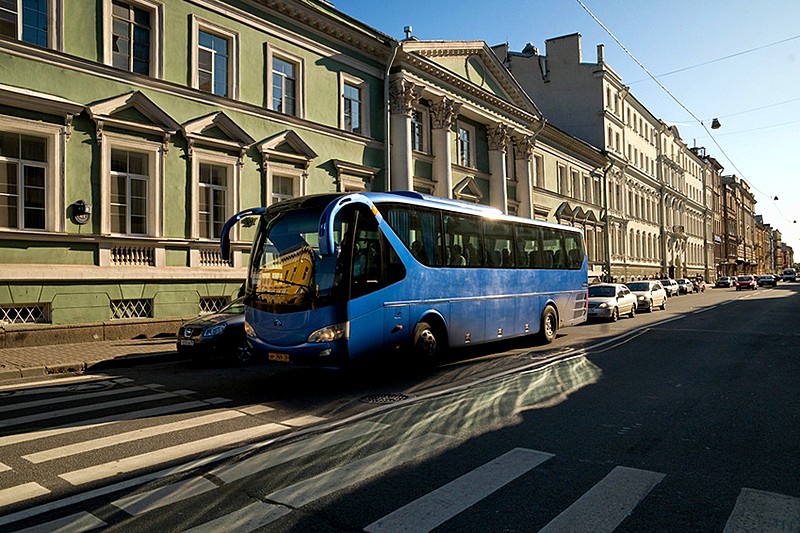
Stackenschneider himself lived with his family at No. 10, in the mansion he reconstructed 1851-1852. The building housed his living quarters, his studio, a winter garden, and even his own theatre, and had interiors to match the many royal palaces he designed. The Ginzburg Mansion at No. 14 dates back to 1740, and now houses a secondary school specializing in teaching English and Finnish.
The striking constructivist building at No. 20 is the Apartment Building of the Printers Union, built 1929-1931 by Mark Felger. Equally eye-catching but rather more suited to the general tone of the street, the House of Prince Semyon Ambalek-Lazarev is a beautiful example of Russian Neoclassical Revival architecture built 1913-1914 by Ivan Fomin. One of Russia's richest men, Ambalek-Lazarev was a geologist who inherited several mining concerns in the Urals and also a keen amateur archaeologist who made several significant finds on expeditions to Syria and Palestine.
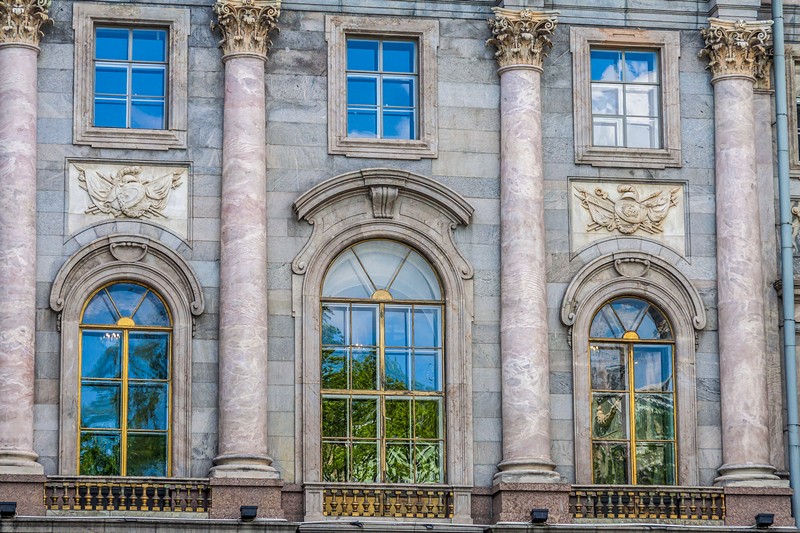
The elegant neoclassical mansion at No. 26 was originally built by Luigi Rusca for the court surgeon Ebeling in 1803. It was later briefly occupied by Anton Delvig, fellow poet and close friend of Alexander Pushkin, and then at the end of the 19th century by the more famous poet Aleksey Apukhtin, whose verses are now best known in musical settings by Pyotr Ilyich Tchaikovsky, the poet's former classmate at the St. Petersburg School of Jurisprudence and lifelong friend.
The back entrance to the Palace of Grand Duke Vladimir Alexandrovich (No. 27) is unimpressive in comparison with the superb Renaissance Revival facade facing the Neva River. As Millionaya Ulitsa approaches Palace Square, crossing the Winter Channel, private residences give way mostly to administrative buildings, and two superior examples of Renaissance Revival architecture are represented by the Naval Archive (36), built by Maximilian Messmacher (1883-1887), and the neighboring Residential Building of the Guards Headquarters (No. 38). Opposite is probably the most famous building on the street, the New Hermitage or "House with Atlantes" - Russia's first purpose-built art museum. It was built in 1839-1852 under the direction of Leo von Klenze. Until the 1930s, the front portico with ten Atlantes was the main entrance to the Hermitage.
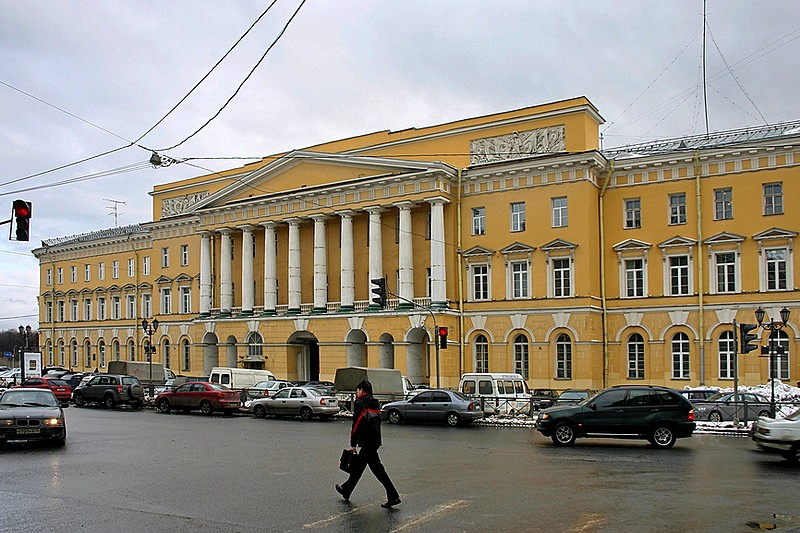
Millionaya Ulitsa ends at the intersection with Palace Square, between the Old Hermitage and the Guards Corps Headquarters. In the Soviet era, Millionnaya Ulitsa was renamed Ulitsa Khalturina, in memory of Stepan Khalturin, a leader of the People's Will revolutionaries who was employed as a carpenter in the Winter Palace and used his position to plant a bomb in a failed attempt on the life of Alexander II. This clumsy, if not obscene, attempt to rid the street of its historic associations was doomed to failure, as nearly every building on Millionaya Ulitsa is connected either to the Romanov family or to the very highest ranks of St. Petersburg's Pre-Revolutionary society.
| Metro stations: | Nevsky Prospekt / Gostiny Dvor, Admiralteyskaya |
|---|---|
| Directions: | Exit Admiralteyskaya Metro Station and right then left onto Bolshaya Morskaya Ulitsa. Cross Nevsky Prospekt and proceed across Palace Square to the north-east corner, where Millionaya Ulitsa ends. From Nevsky Prospekt or Gostiny Dvor, exit onto the Griboedov Canal, and walk right along the canal to the Church on the Spilled the Blood. After passing the church, cross the Moyka River and head north over the Field of Mars to reach the eastern end of Millionaya Ulitsa. |
| Best walking route: | The whole street (about 1 hour) |
| What's here? | New Hermitage, Marble Palace, Pavlovsky Life Guards Regiment Barracks, Palace of Grand Duke Vladimir Alexandrovich, Baryatinskaya Mansion, Count Apraksin Mansion, Palace of the Prince of Oldenburg, Saltykov House, 1st Zimny (1st Winter) Bridge, Monument to Suvorov |
| What's nearby? | Letniy Sad (Summer Garden), Field of Mars, Winter Palace / Hermitage, Palace Square, Zimnaya Kanavka (Winter Channel), Moyka River, Neva River |

